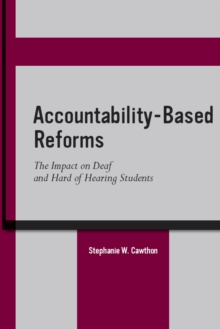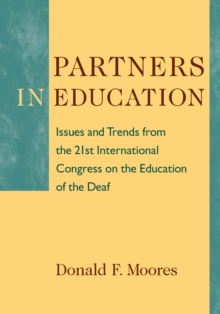
Deaf Students and the Qualitative Similarity Hypothesis : Understanding Language and Literacy Development PDF
Edited by Paul Peter V. Paul, Wang Ye Wang, Williams Cheri Williams
Part of the Deaf Education series
Description
The difficulty that deaf and hard of hearing students have in attaining language and literacy skills has led to postulations that attribute their struggle to a developmental deficit. Recent research reveals, however, that deaf students acquire language structures, produce errors, and employ strategies in the same fashion as younger hearing students, though at later ages. The ability of all students to learn language and literacy skills in a similar manner at different stages forms the foundation of the Qualitative Similarity Hypothesis (QSH).
This volume describes the theoretical underpinnings and research findings of the QSH. It presents the educational implications for deaf and hard of hearing children and offers reason-based practices for improving their English language and literacy development. This collection also stresses the critical importance of exposing educators to the larger fields of literacy and second-language learning. Providing this background information expands the possibility of differentiating instruction to meet the needs of deaf students. Deaf Students and the Qualitative Similarity Hypothesis includes commentary on the QSH for both first- and second-language English learners and reflects on how the QSH can effect a better future for all language students.
Information
-
Download - Immediately Available
- Format:PDF
- Pages:336 pages
- Publisher:Gallaudet University Press
- Publication Date:15/12/2013
- Category:
- ISBN:9781563685859
Information
-
Download - Immediately Available
- Format:PDF
- Pages:336 pages
- Publisher:Gallaudet University Press
- Publication Date:15/12/2013
- Category:
- ISBN:9781563685859









